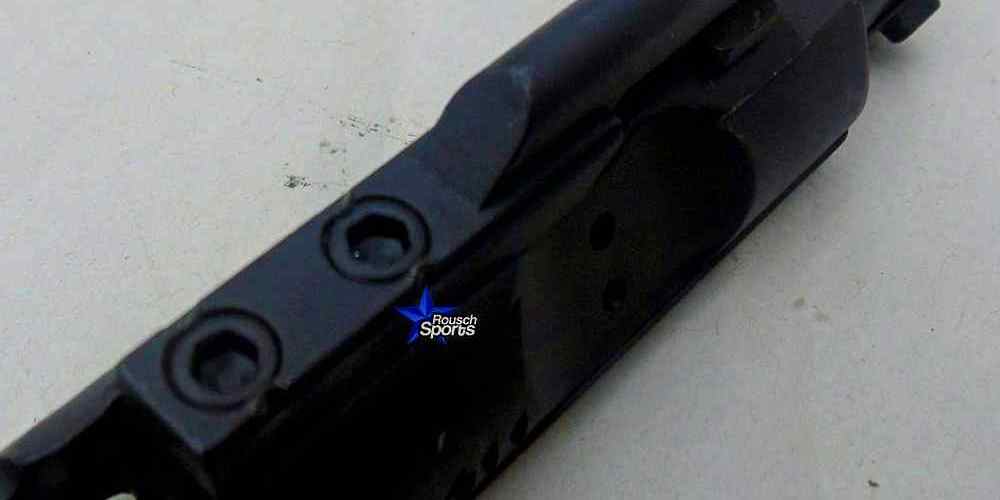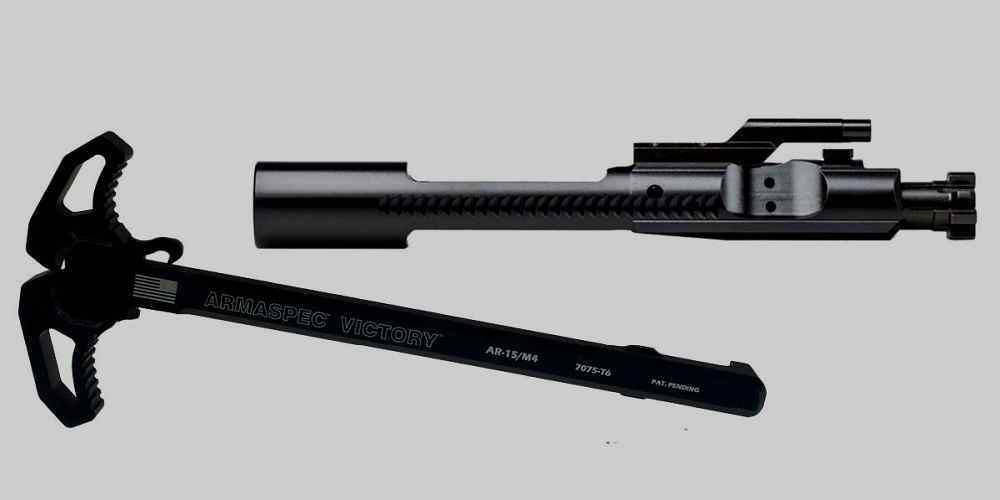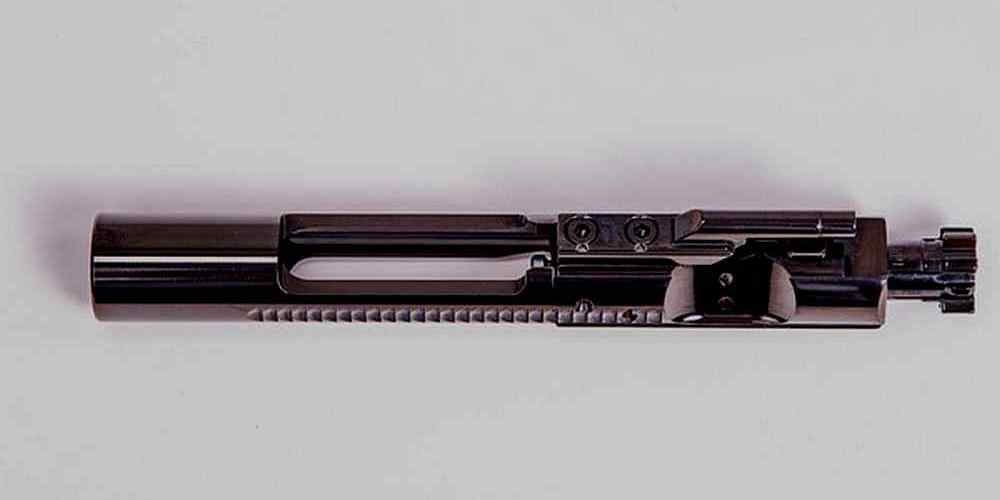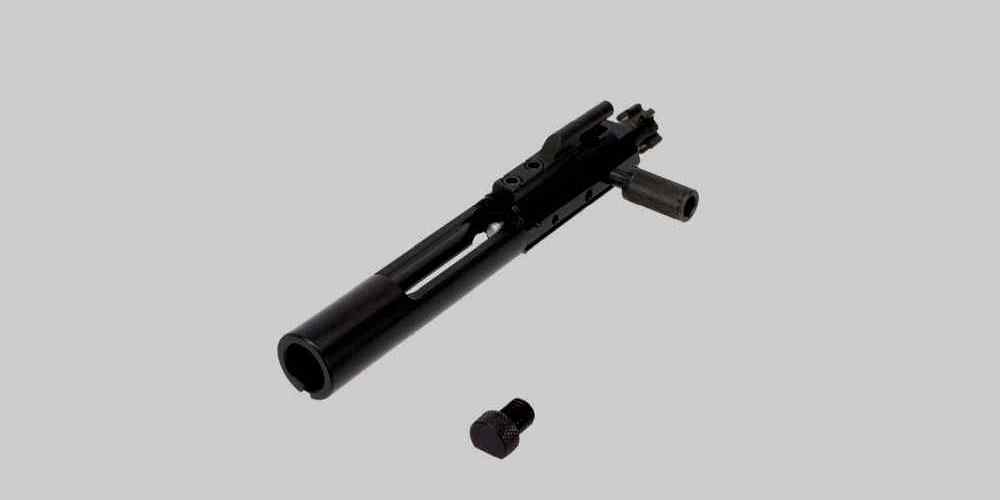“Maximize performance with proper gas key maintenance for your AR15 BCG.”
Benefits of Upgrading to a Nickel Boron BCG
If you’re a gun enthusiast or a seasoned shooter, you probably already know the importance of keeping your AR15 in top condition. One crucial component of your AR15 is the Bolt Carrier Group (BCG), which plays a vital role in the functioning of your firearm. In this article, we’ll delve into the gas key function of the AR15 BCG and discuss the benefits of upgrading to a Nickel Boron BCG.
The gas key is a small but critical part of the AR15 BCG. It is located on top of the bolt carrier and is responsible for transferring the gas pressure from the gas tube to the bolt carrier. This pressure is what cycles the action of the firearm, allowing it to chamber a new round, extract the spent casing, and reset the firing mechanism.
Proper maintenance of the gas key is essential to ensure the reliable operation of your AR15. Over time, carbon buildup and fouling can accumulate in the gas key, causing it to become clogged and preventing the proper transfer of gas pressure. This can lead to malfunctions such as failure to extract, failure to feed, and even catastrophic failures if left unchecked.
One way to improve the performance and reliability of your AR15 is by upgrading to a Nickel Boron BCG. Nickel Boron is a coating that provides several advantages over traditional BCG finishes such as phosphate or chrome. One of the main benefits of Nickel Boron is its self-lubricating properties, which reduce friction and wear on the BCG components.
By reducing friction, Nickel Boron BCGs require less lubrication than traditional BCGs, which can help prevent carbon buildup and fouling in the gas key. This means less time spent cleaning and maintaining your AR15, and more time spent shooting.
Another advantage of Nickel Boron is its corrosion resistance. Traditional BCG finishes can be prone to rust and corrosion, especially in humid or wet environments. Nickel Boron BCGs are highly resistant to corrosion, making them ideal for use in harsh conditions.
In addition to improved performance and reliability, Nickel Boron BCGs are also easier to clean. The slick surface of the Nickel Boron coating makes it easier to wipe away carbon buildup and fouling, reducing the time and effort required to maintain your AR15.
Overall, upgrading to a Nickel Boron BCG is a smart investment for any AR15 owner looking to improve the performance and reliability of their firearm. With its self-lubricating properties, corrosion resistance, and ease of cleaning, a Nickel Boron BCG can help you get the most out of your AR15.

In conclusion, understanding the gas key function of the AR15 BCG is essential for maintaining the reliable operation of your firearm. Upgrading to a Nickel Boron BCG can provide numerous benefits, including improved performance, reliability, and ease of maintenance. Consider making the switch to a Nickel Boron BCG today and experience the difference for yourself.
How to Properly Clean and Lubricate Your AR15 BCG
When it comes to maintaining your AR15, one of the most important components to pay attention to is the bolt carrier group (BCG). The BCG is responsible for cycling the action of the rifle, extracting and ejecting spent casings, and loading new rounds into the chamber. Without a properly functioning BCG, your AR15 will not operate reliably.
One crucial part of the BCG that often gets overlooked is the gas key. The gas key is located on top of the bolt carrier and is responsible for directing gas from the gas tube into the BCG to cycle the action. If the gas key is not properly maintained, it can lead to malfunctions and failures in your AR15.
To properly clean and maintain your AR15 BCG, you will need a few basic tools: a cleaning rod, bore brush, solvent, lubricant, and a rag. Start by removing the BCG from your rifle and disassembling it. Pay close attention to the gas key and make sure it is free of any carbon buildup or debris. Use a cleaning rod and bore brush to scrub away any fouling, being careful not to damage the gas key.
Once the gas key is clean, inspect it for any signs of wear or damage. If you notice any cracks or deformation, it is important to replace the gas key immediately to prevent any potential failures. After cleaning the gas key, move on to the rest of the BCG, making sure to clean all surfaces thoroughly.
After cleaning the BCG, it is important to lubricate it properly to ensure smooth operation. Apply a small amount of lubricant to the gas key and all moving parts of the BCG. Be sure not to over-lubricate, as this can attract dirt and debris, leading to malfunctions.
Once the BCG is clean and lubricated, reassemble it and reinstall it in your rifle. Cycle the action a few times to ensure everything is functioning properly. If you notice any issues, such as sticking or rough cycling, disassemble the BCG and inspect it again for any missed debris or improper lubrication.
In addition to regular cleaning and maintenance, it is important to periodically check the torque on the gas key screws. The gas key screws should be torqued to the manufacturer’s specifications to ensure they do not come loose during firing. If you notice any loosening of the gas key screws, tighten them immediately to prevent any potential failures.
By properly cleaning and maintaining your AR15 BCG, you can ensure that your rifle operates reliably and safely. Regular inspection and maintenance of the gas key and other components of the BCG will help prevent malfunctions and failures, keeping your AR15 in top condition for years to come. Remember, a well-maintained BCG is essential for the proper functioning of your AR15, so take the time to care for it properly.
Importance of Checking Gas Rings for Wear and Tear
When it comes to maintaining your AR15, one of the most important components to keep an eye on is the gas key. The gas key plays a crucial role in the functioning of your rifle, as it is responsible for directing gas from the barrel to the bolt carrier group (BCG) to cycle the action. Without a properly functioning gas key, your AR15 will not cycle properly, leading to potential malfunctions and decreased performance.
One of the key aspects of maintaining your gas key is checking the gas rings for wear and tear. Gas rings are small rubber rings that create a seal between the gas key and the BCG, ensuring that gas is properly directed to cycle the action. Over time, these gas rings can wear down due to the high pressure and heat generated during firing. It is important to regularly inspect these gas rings for any signs of wear or damage, as a faulty gas ring can lead to gas leakage and a loss of cycling efficiency.
To check the gas rings on your AR15, simply remove the BCG from the rifle and inspect the gas rings for any signs of wear or damage. Look for any cracks, tears, or deformities in the rubber material. If you notice any issues with the gas rings, it is important to replace them immediately to ensure proper functioning of your rifle.
Regularly checking and replacing gas rings is essential for maintaining the reliability and performance of your AR15. By ensuring that the gas rings are in good condition, you can prevent potential malfunctions and keep your rifle running smoothly. Additionally, replacing worn gas rings is a simple and inexpensive maintenance task that can be easily performed at home with basic tools.
In addition to checking the gas rings, it is also important to inspect the gas key itself for any signs of wear or damage. The gas key should be securely attached to the BCG and free of any cracks or deformities. If you notice any issues with the gas key, it is important to address them promptly to prevent any potential cycling issues.
Overall, maintaining the gas key and gas rings on your AR15 is essential for ensuring the reliability and performance of your rifle. By regularly inspecting these components for wear and tear, you can prevent potential malfunctions and keep your rifle running smoothly. Remember to replace any worn or damaged gas rings promptly to maintain the proper functioning of your AR15. With proper maintenance, your AR15 will continue to perform at its best for years to come.
Differences Between Full Auto and Semi-Auto BCGs
When it comes to AR15 rifles, the bolt carrier group (BCG) is a crucial component that plays a significant role in the firearm’s operation. One key aspect of the BCG that often gets overlooked is the gas key. Understanding the function of the gas key and how it differs between full auto and semi-auto BCGs is essential for proper maintenance and performance of your AR15.
The gas key is a small, rectangular piece that is attached to the top of the BCG. Its primary function is to channel hot gases from the fired round back into the BCG to cycle the action of the rifle. This process is what allows the AR15 to eject the spent casing, chamber a new round, and reset the hammer for the next shot.
In a full auto BCG, the gas key is designed to work with a fully automatic firearm. This means that the gas key is slightly larger and heavier than a semi-auto gas key to accommodate the increased rate of fire. Additionally, the gas ports on a full auto BCG are typically larger to allow for more gas flow, which helps to cycle the action faster in full auto mode.
On the other hand, a semi-auto BCG is designed for use in semi-automatic firearms, which fire one round per trigger pull. The gas key on a semi-auto BCG is smaller and lighter than a full auto gas key, as it does not need to cycle the action as quickly. The gas ports on a semi-auto BCG are also smaller to reduce the amount of gas flow, which helps to control the rate of fire in semi-auto mode.
Proper maintenance of the gas key is essential to ensure the reliable function of your AR15. One common issue that can arise with the gas key is carbon buildup. Over time, carbon can accumulate on the gas key and gas tube, which can impede the flow of gas and cause malfunctions. To prevent this, it is important to regularly clean the gas key and gas tube with a solvent and brush to remove any carbon buildup.
Another important aspect of gas key maintenance is ensuring that it is properly staked to the BCG. Staking is the process of peening the metal around the gas key screws to prevent them from coming loose during firing. A properly staked gas key is essential for preventing gas leaks and ensuring the reliable function of your AR15.
In conclusion, understanding the function and maintenance of the gas key in your AR15 BCG is essential for proper operation of your firearm. Whether you have a full auto or semi-auto BCG, knowing the differences between the two can help you make informed decisions about maintenance and upgrades for your AR15. By keeping your gas key clean and properly staked, you can ensure that your AR15 functions reliably and safely for years to come.
Best Practices for Troubleshooting BCG Malfunctions
If you own an AR15, you know how important it is to keep your rifle in top working condition. One crucial component of the AR15 is the bolt carrier group (BCG), which plays a vital role in the functioning of the rifle. Understanding the gas key function and proper maintenance of the BCG is essential for ensuring the reliability and longevity of your firearm.
The gas key is a small, rectangular piece located on top of the bolt carrier. It is responsible for transferring the gas pressure from the gas tube to the bolt carrier, which cycles the action of the rifle. Without a properly functioning gas key, your AR15 will not cycle properly, leading to malfunctions and potential safety hazards.
To ensure that your gas key is functioning correctly, it is important to regularly inspect and maintain it. One common issue that can arise with the gas key is loosening of the screws that hold it in place. If the screws become loose, the gas key can shift out of alignment, causing gas leakage and potential cycling issues. To prevent this, it is recommended to check the screws for tightness regularly and use a thread-locking compound to secure them in place.
Another important aspect of gas key maintenance is ensuring that it is properly staked. Staking is the process of deforming the metal around the screws to prevent them from loosening. Properly staked gas keys will have a visible mark or indentation around the screws, indicating that they have been secured in place. If your gas key is not properly staked, it is recommended to have it re-staked by a professional gunsmith to prevent any potential issues.
In addition to regular maintenance, it is also important to clean your BCG regularly to prevent carbon buildup and ensure smooth operation. Carbon buildup can cause increased friction and wear on the components, leading to malfunctions and decreased reliability. To clean your BCG, simply remove it from the rifle and use a solvent and brush to scrub away any carbon deposits. Be sure to lubricate the components properly after cleaning to ensure smooth operation.
If you encounter any malfunctions with your BCG, such as failure to extract or eject, it is important to troubleshoot the issue promptly to prevent further damage to your rifle. One common cause of BCG malfunctions is a dirty or improperly lubricated gas key. If you suspect that the gas key is the issue, disassemble the BCG and inspect the gas key for any signs of wear or damage. Clean and lubricate the gas key thoroughly before reassembling the BCG and testing the rifle.
In conclusion, understanding the gas key function and proper maintenance of your AR15 BCG is essential for ensuring the reliability and longevity of your firearm. By regularly inspecting and maintaining your gas key, you can prevent malfunctions and potential safety hazards. Remember to clean and lubricate your BCG regularly to prevent carbon buildup and ensure smooth operation. If you encounter any malfunctions, be sure to troubleshoot the issue promptly to prevent further damage to your rifle. By following these best practices, you can keep your AR15 in top working condition for years to come.







